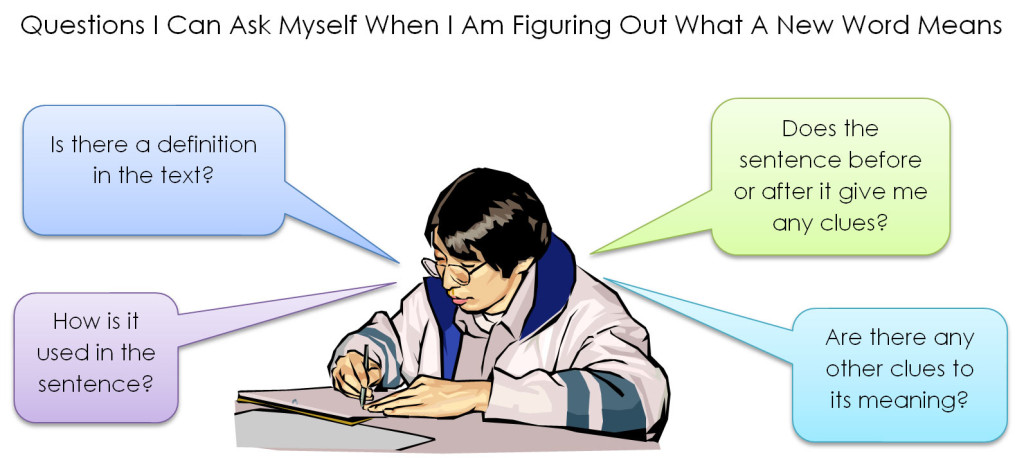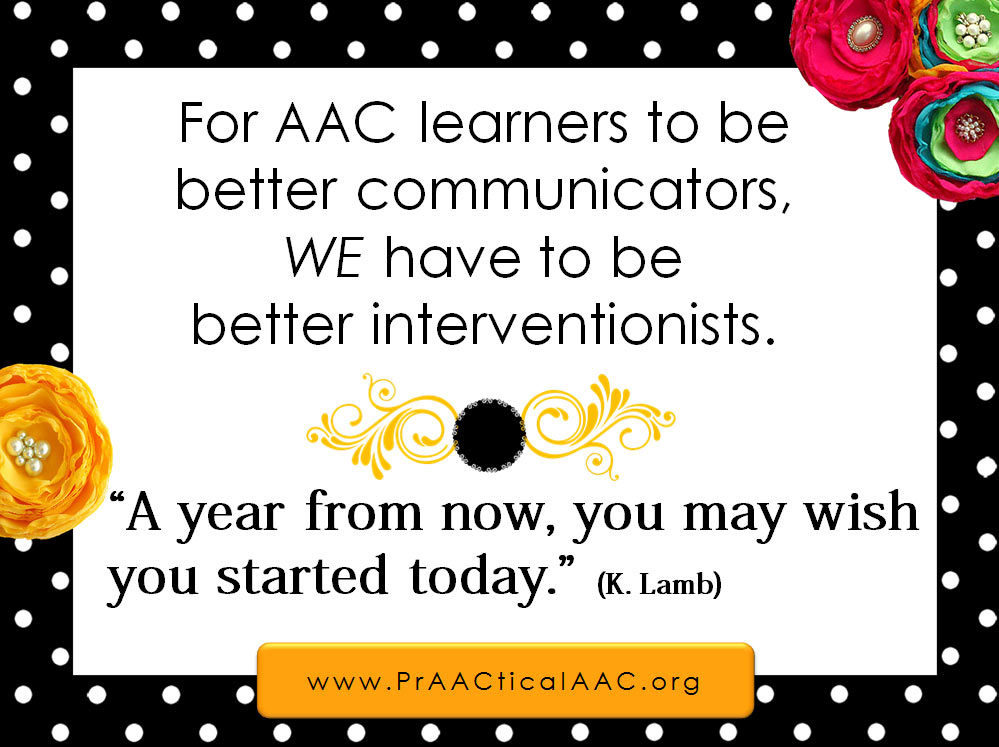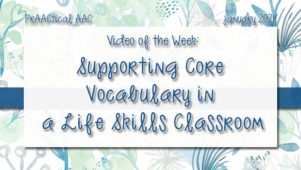Strategy of the Month: Classroom Participation
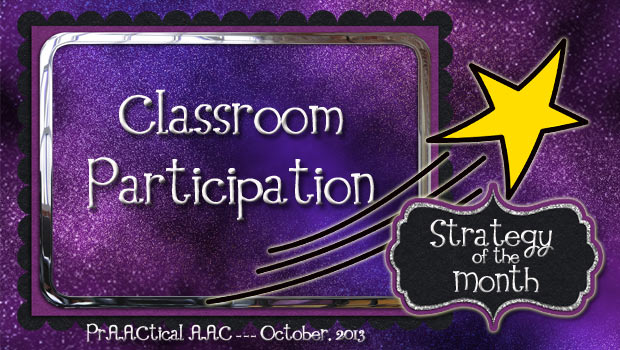
How can SLPs support students who use AAC and help them communicate more frequently in the classroom?
Collaboration with the teacher is, of course, central to making this work. If you’re paired with an educator who knows, loves, and supports the AAC needs of her students, then you are in for a real treat. Collaborating with someone like that is fun and energizing. But what if your partner is new to AAC or one who doesn’t really know (or care to know) much about it? What if there is a bit of resistance to change or a passive-aggressive style? No match for a committed clinician! Ah. The ART of being an SLP. Take equal measures of creative problem-solving, wonderful pragmatics, and tenacity, and solutions will be found. In really sticky situations, we’ve seen colleagues make breakthroughs on the strength of brownies and iced coffee. You know how to make this work, SLPs. We’ve seen you in action!
Seriously, though, whenever we enter a classroom with the intent of supporting a student with AAC needs, one thing guides all of our behavior. Simply put, WE are a guest in someone else’s home. Not a supervisor or an assistant or a Perfect Polly. A guest. And, so, we try to do what good guests do. Bring a little something (not always tangible) for the host. Stay out of the way. Be nice. Clean up after ourselves. Be helpful. Appreciate whatever hospitality was given. A good guest is more likely to be welcomed back. So we do our best to hang up the towels and bite our tongues when that’s called for. It can take a little longer to get that real collaboration going with this approach, but the changes that result are likely to be lasting ones.
Beginning Communicators
We’ve already posted about ways to use talking switches and sequential message SGDs, both of which have tremendous potential for helping beginning learners of AAC to be active participants in classroom activities and routines. We can step that up by using SGDs with more language options. Before we list some ideas, one quick disclaimer. We’re not suggesting that these low tech means of communication are sufficient for meeting all of the communicator’s needs. These ideas are in addition to, not instead of, access to core language based aids.
What can you do with a digitized speech device that has 4, 6, 8, or 12 locations to increase classroom participation? Plenty! Here are some thoughts.
- Retell a story: Program each cell with a part of the story so that the AAC learner can move in sequence to retell a story that the class has read.
- Ask questions: Lots of classrooms teach students to ask certain kinds of questions. For example, when learning how to identify genres of literature, students might be taught to ask themselves things like whether the setting or characters could be real. Why not have a beginning AAC learner support his/her classmates by asking those questions?
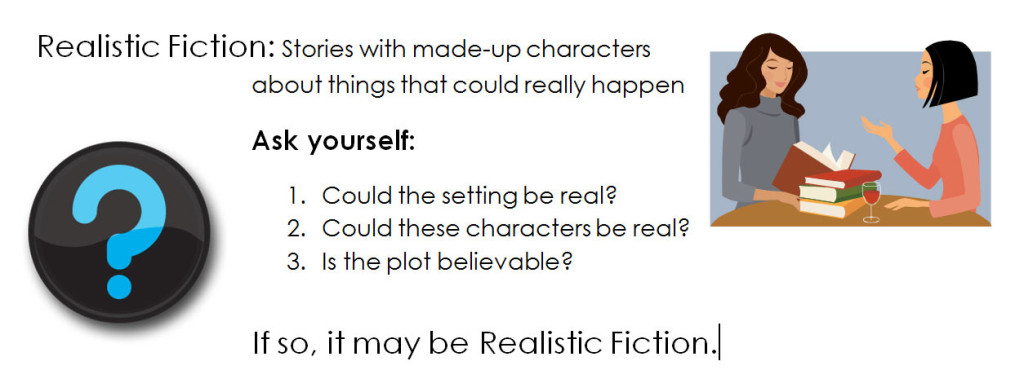
Questions like these are popular for building metacognitive skills, but students often forget to use them. Maybe their classmate who is learning to use AAC can help out. Once you start to think about it, you’ll find lots of use for this strategy, because teachers often try to get the kids to ask themselves questions in the learning anything from writing sentences with spaces between words to solving certain math problems to finding the main idea.
- Co-Lead a Brain Break: Short activity breaks have been all the rage these days, and teachers have an incredibly diverse set of brief activities to help the class stay sharp. Why not have the process or steps be announced by a beginning communicator using AAC?
- Early finishers: Many classrooms have prepared activities for students who finish their work quickly. Maybe the AAC learner can help out by staffing that center and offering choices to their classmates.
- Get their attention: Program it with a few attention-getters that will buy them time to use their regular, more complex communication aid. Have a student who is learning to use core vocabulary on a board, SGD, or AAC app? Program the low tech device with things like: I can answer that. I think I know. Can I tell you something? When you are ready, I have something to say. Can I tell you what I think? I want to try. Can I have a turn soon? Once they’ve used that to get the teacher’s attention, they can be helped to use their core word device to make their contribution. True, they will need assistance in many cases, but it is a good way to build the habit of having them participate actively in the class activity. When teachers, aides, and classmates are used to the AAC learner being a regular part of the discussion, it is easy to fade our support when the learner becomes more communicatively competent and can respond independently. Our advice? Don’t wait for that. Start building habits of active participation now. Contributing with support, is still contributing and that’s the important thing.
- Review key points: Much of what is taught in group lessons, like Writer’s Workshop, uses mini-lessons. Teachers give 3-5 minute lessons on a key skill, then students proceed to put that into action. Can our AAC learners help out by reviewing those key points to wrap up the mini-lesson and during subsequent practice activities? Might be worth discussing this with the teacher.
Students with More Advanced Language Skills
Students who are more linguistically competent may have an advantage in some ways, but it still may take some work to get ensure that these skills are generalized to classroom lessons. We’ve gotten into a pickle more than once by assuming that just because they CAN say something, that they actually WILL speak up in class. Check those assumptions, SLPs.
This will be easiest if the student is using a core language approach because then the student always has a set of words to use no matter what the topic. Still, they will probably need some behind the scenes help to develop the habit of being an active participant. Here are some suggestions.
- Plan a strategy with the AAC learner: It can be terribly intimidating for students at this level to throw their hat in the ring and speak up, particularly when they don’t have strong relationships with their classmates. We can build their confidence by helping them plot out a strategy that is relatively easy and risk-free, like answering yes/no questions and asking questions in group discussions, to get them started. Together, the two of you can decide on the specifics, pre-program messages (if appropriate), and give a pep talk. Once they do this for awhile and feel successful, you can move on to talk about more adventurous ways of participating.
- Pre-program some low-risk contributions: Make it easy to agree with a classmate’s response (e.g., “That sounds right to me.” “That makes a lot of sense.”) and/or provide positive feedback (e.g., “I like the way you said that.” “I’m glad you asked about that. I was wondering, too.” “That was helpful”).
- Practice it: Planning is great, but there’s no substitute for practice. Help them practice the strategy you planned together with role plays.
- Track it: When we measure human behavior, we often change it. While this is a problem for researchers, it’s something that we AAC professionals love to use to our advantage. Want to increase the frequency with which a student is called on or volunteers their own thoughts? Want to have the student ask more questions or socialize more often? Start to track the data. Direct observation data is best, but even self-reported behavior can be of value. When people know that we are looking for and documenting a certain behavior, they often make it a priority to ‘put their best foot forward’ so that they don’t look bad in front of others.
- Get the student involved in self-reflection: This is a great opportunity to build some of those ‘meta’ skills by having them reflect on their participation. How frequently are they participating in ___ class? Are they happy with that? Do they participate more in small groups versus whole class discussions? How satisfied are they with that? We love rating scales, like the ones you can download here, for things like this. Image in p2, doc made
- Put it in the IEP: Consider adding phrases to the IEP goals that build in participation opportunities. E.g., ‘At least 3 times per activity, S will…;’ ‘In every class, S will…;’ ‘During self-selected reading block, S will ___ no fewer than 10 times.’
There are no quick and easy answers to creating an environment in which students who use AAC are full participants in their classroom community. It takes time and perseverance. Which makes us think of this:
Filed under: Strategy of the Month
Tagged With: classroom, education, participation
This post was written by Carole Zangari
